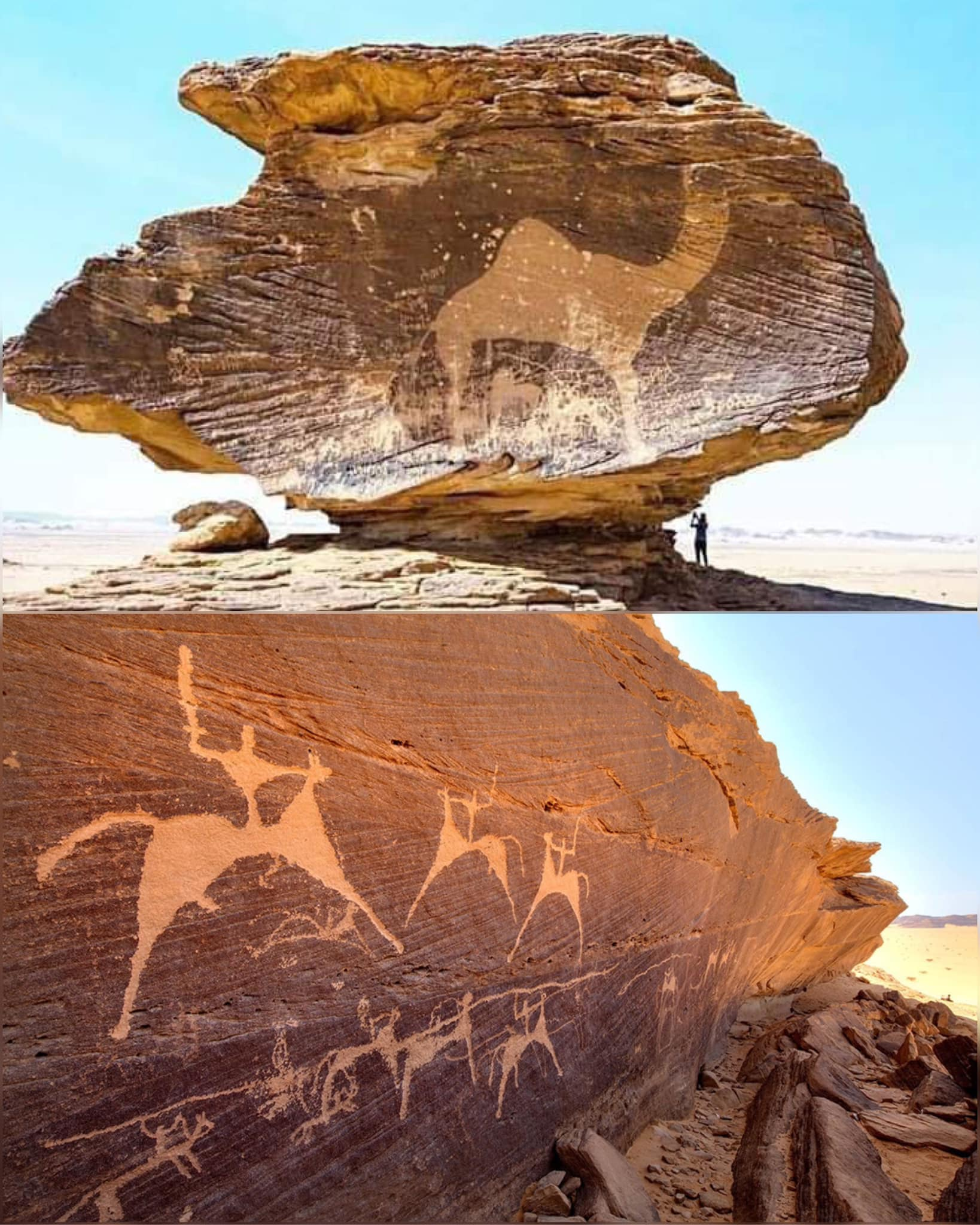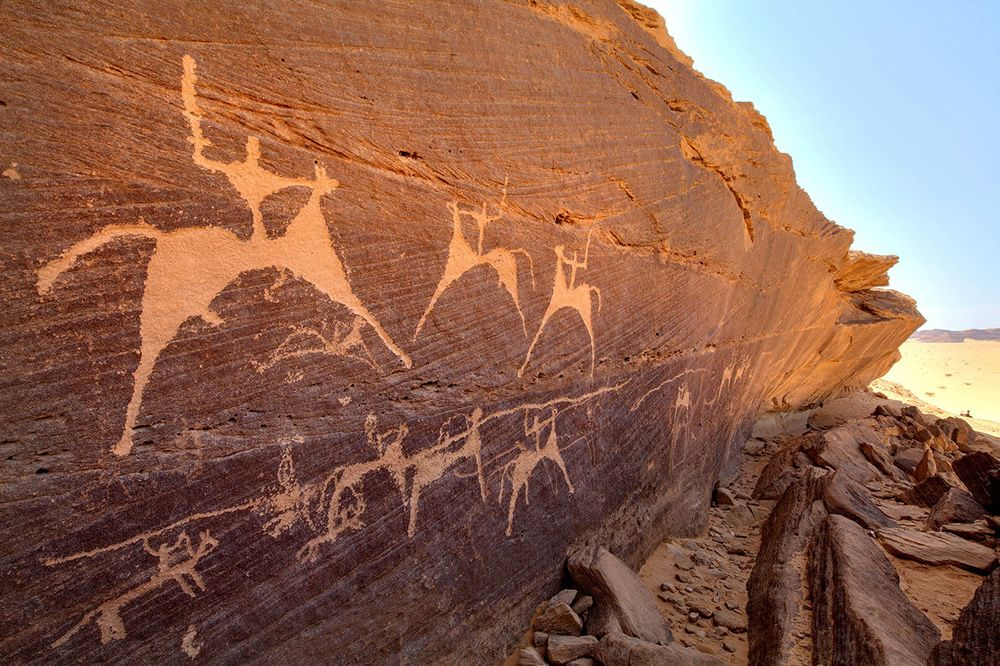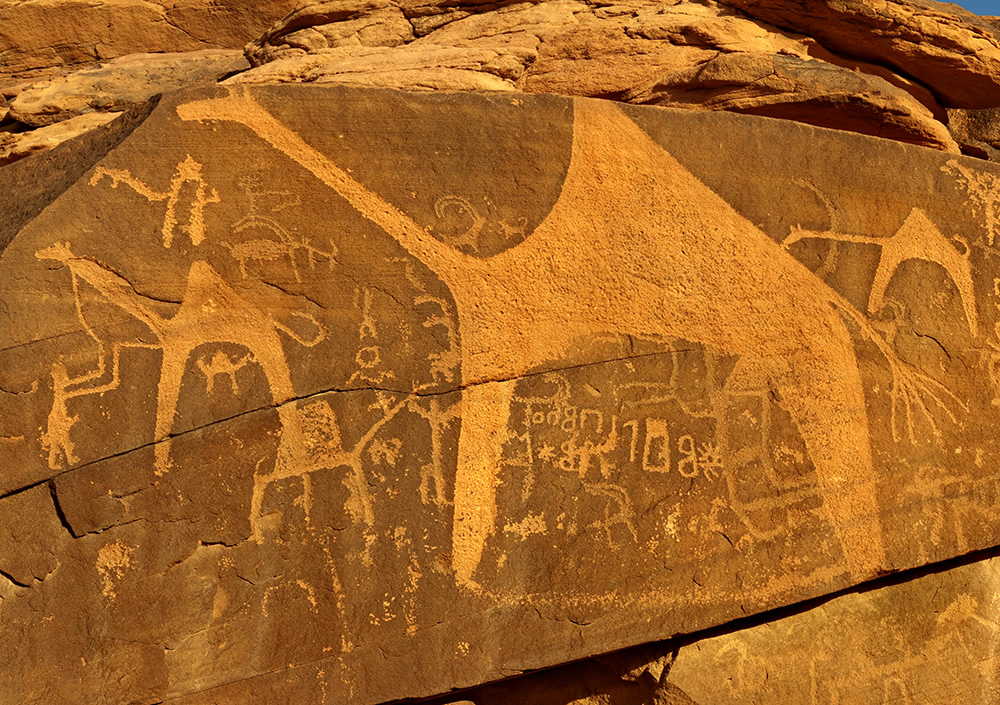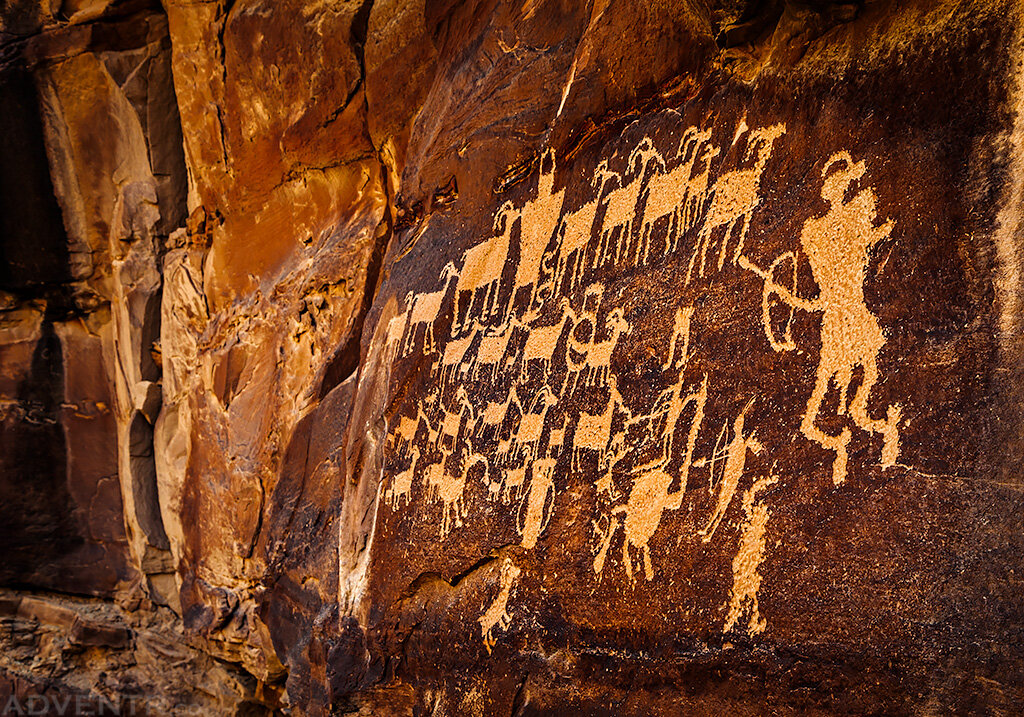Bi’r Hima, located in the southwestern region of Saudi Arabia, stands as one of the world’s most remarkable archaeological sites. Renowned for its extraordinary collection of ancient rock art and inscriptions, this site offers an invaluable window into the lives of early Arabian communities. Dating back as far as 7,000 years, Bi’r Hima’s petroglyphs serve as silent storytellers, capturing the essence of an era long before modern trade routes traversed the desert sands.

**A Glimpse into Ancient Lives** The rock carvings at Bi’r Hima reveal a rich tapestry of daily life, beliefs, and survival strategies of ancient societies. These petroglyphs, painstakingly etched into the stone by travelers and tribes, depict scenes of hunting, rituals, and social gatherings. They also illustrate the importance of livestock, with camels, ibexes, and other animals playing significant roles in the life of these early desert dwellers. Such depictions highlight the vital relationship between humans and nature in this harsh, arid environment.

**Cultural and Historical Significance** Bi’r Hima holds immense cultural and historical value, providing crucial insights into the socio-economic and spiritual practices of the time. The inscriptions, composed of early forms of Arabic and other ancient scripts, suggest that this site was a significant waypoint for travelers and caravans. It functioned as both a rest stop and a place of spiritual and cultural expression, reflecting the shared experiences of those who traversed the Arabian Peninsula.

**Artistic Diversity and Techniques** One of the most fascinating aspects of Bi’r Hima is the diversity of artistic styles found among the rock carvings. Some engravings are simple and symbolic, while others display intricate detail, showcasing the craftsmanship and artistic sensibilities of their creators. The use of varied techniques, from pecking and chiseling to fine-line carving, underscores the evolution of artistic methods over millennia.

**Theories About the Site’s Purpose** Scholars have proposed multiple theories about the purpose of Bi’r Hima. While many believe it served as a crucial stopover for trade caravans journeying across the Arabian desert, others suggest that it had religious and ceremonial importance. The presence of carvings depicting deities and symbolic motifs supports the notion that Bi’r Hima may have also been a sacred site, used for rituals and communal gatherings.
**Challenges in Preservation** Preserving Bi’r Hima’s ancient rock art poses significant challenges. The region’s extreme temperatures, wind erosion, and human activity have all contributed to the gradual degradation of these irreplaceable artifacts. Efforts by the Saudi Arabian government and international archaeological organizations are ongoing, focusing on conservation, research, and raising public awareness about the importance of safeguarding this cultural treasure.
**A Key to Understanding Human Heritage** The petroglyphs and inscriptions at Bi’r Hima are more than just artistic expressions; they are a testament to human resilience and ingenuity. They provide an unfiltered record of human adaptation and interaction with the natural world. By studying these ancient carvings, historians and archaeologists gain critical insights into how early societies communicated, worshipped, and survived in one of the most unforgiving climates on Earth.
Bi’r Hima continues to captivate researchers and travelers alike, standing as a testament to the rich history and cultural legacy of ancient Arabian societies. Its rock art and inscriptions are invaluable for understanding the complexities of early human life and the development of communication and artistic expression. As efforts to preserve and study this archaeological marvel continue, Bi’r Hima remains a bridge connecting us to the distant past and the enduring spirit of its creators.

















